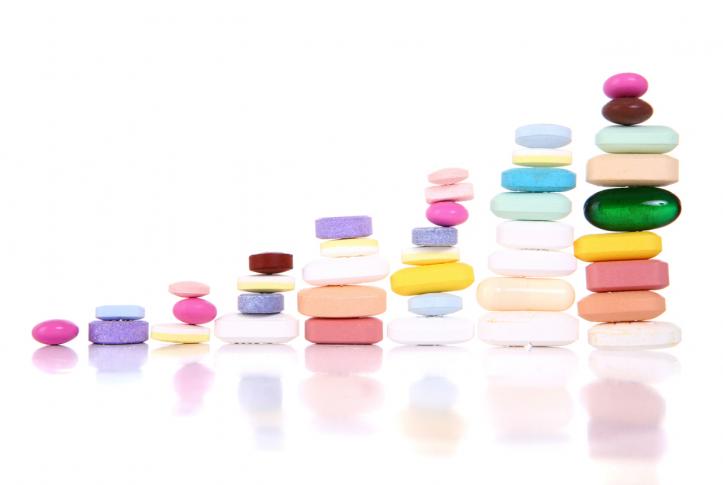Since the release of President Trump’s blueprint for lowering high prescription drug prices, U.S. Food and Drug Administration (FDA) Commissioner Scott Gottlieb, M.D., has continued to implement the administration’s agenda for increasing market competition and transparency. In an earlier piece, we assessed key elements of the FDA’s strategy and their potential to address the problems leading to high prices.
To help track the FDA’s progress in implementing its strategy, we’ve created a timeline of the major announcements and regulatory actions the agency has taken to encourage a competitive market for biologic drugs, address drug shortages and abuses of the FDA’s citizen petition process, and streamline the Risk Evaluation and Mitigation Strategies (REMS) program, which aims to promote timelier competition from generic drug manufacturers. We’ll be updating this periodically. In a future post, we’ll discuss additional steps the agency and Congress could take to lower drug prices.
Below we focus on the administration’s latest steps to promote competition in the important biologic and biosimilar drug markets, which includes such commonly prescribed medications as Humira and Rituxin.
Stirrings on the Biosimilar Front
When Congress passed the Biologics Price Competition and Innovation Act (BPCIA) in 2010, it sought to establish an abbreviated pathway for generic biologic drugs, often referred to as biosimilars, to come to market. The biosimilar market in the U.S. lags far behind that in Europe, which has 45 biosimilars approved for sale.1 The FDA has approved just 16, with few actually available to patients — a result of patent challenges and other legal disputes between biologic and biosimilar manufacturers.2 According to an FDA analysis, if approved biosimilars had been available in the U.S., Americans could have saved more than $4.5 billion in 2017.3
We believe the FDA’s Biosimilar Action Plan, announced in July 2018, has the potential to do more to foster competitive drug markets than all the other steps announced or taken to date. The plan lays out four areas of focus for the agency:
- Improve efficiency in biosimilar development and approval processes.
- Increase the clarity of scientific and regulatory information to potential biosimilar manufacturers.
- Educate patients, clinicians, and payers on biosimilars.
- Address anticompetitive behaviors by some manufacturers to delay biosimilar competition.
But while the plan is a good start, more is needed to ensure robust competition and providers’ use of biosimilars. For example, the Trump administration may want to consider steps to address imbalances in reimbursement and coverage policy for biosimilars, like in the Medicare program.
As of July 31, 2018, there were 68 biosimilar development efforts4 enrolled in the FDA’s Biosimilar Biological Product Development Program. The FDA intends to expand this number. Meanwhile, the FDA has meeting requests from manufacturers to discuss the development of biosimilars for 31 products.5
FDA and Congress Can Do More on Biosimilars and Other Pricing Issues
Much of the FDA’s authority for prescription drugs is rooted in reviewing and approving drug product applications. Under Commissioner Gottlieb, the agency has taken some important steps to explore its existing authorities to encourage competition — for example, by instituting expedited and priority reviews of generic drug applications when there is a lack of competition. But FDA authority does have its limits.
Congress could support the commissioner in a number of ways, such as preempting state laws that limit biosimilar substitution at the pharmacy and providing deadlines for finalizing interchangeability guidance for biological products. And although Congress didn’t pass any significant legislation last year to expand the FDA’s authority, it did make some quiet progress with respect to other federal agencies, including making it a requirement that patent settlements between biologic and biosimilar manufacturers be reported to the Federal Trade Commission (FTC) for its review.
The truth is that the problems of high prescription drug prices, and their solutions, extend beyond the FDA’s jurisdiction. In addition to the FTC, other agencies, such as the Centers for Medicare and Medicaid Services (CMS), the U.S. Patent and Trademark Office, and the U.S. Department of Justice, must also be involved. The most progress has been made at CMS, where a number of proposals have been introduced for public comment. One of these would change how Medicare reimburses costs for physician-administered drugs, using international reference pricing to set reimbursement rates.
Moving Forward
The FDA continues to be the main agency that is taking meaningful action to implement the Trump administration’s plan to lower drug prices. Commissioner Gottlieb has expanded his agenda to address the imbalance of innovation and competition in the biologic and biosimilar drug markets, which could potentially lead to more affordable drugs for patients. As he continues to move forward, Congress has the opportunity to support the FDA’s work.





